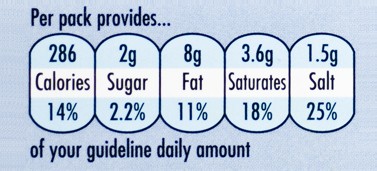 Food Labelling - follow our series on the labelling of food, let us clear up some of the confusing messages and discover how the information provided can be beneficial for the consumer and have a positive impact on health, food safety and the environment.
Food Labelling - follow our series on the labelling of food, let us clear up some of the confusing messages and discover how the information provided can be beneficial for the consumer and have a positive impact on health, food safety and the environment.
Food packaging! Covered in an enormous amount of information, allergen information, nutritional content, ingredients, weight, portion size, product description, cooking/reheating instructions, storage instructions, health claims, dates, instruction's as to how to best dispose of the packaging, manufacturer's details, barcodes, marketing slogans and more. So much information!
But how useful is this information to the average consumer or for that matter, any consumer?
For instance, how often do you look at the allergy advice? What is a food allergy or a food intolerance?
Allergen Labelling
Allergy & Food Intolerance
Labelling - The importance of getting it right!
Whilst an allergy can kill you, a food intolerance is never immediately life threatening although some may lead to more serious symptoms if not managed correctly.
A food allergy is an abnormally high sensitivity to otherwise harmless proteins in food that affects the immune system and can cause a variety of symptoms ranging from tingling sensation in the mouth, itchy skin, hives, rashes, sneezing, wheezing to swelling of the face, lips, tongue and in severe cases the onset of anaphylactic shock which is a potentially fatal response causing the air way to be blocked by this swelling.
Intolerances are caused by deficiencies or reactions in the digestive tract and cause symptoms such as bloating, indigestion and wind. A lactose intolerance for example caused by the absence of lactase, the digestive enzyme responsible for the breakdown of lactose in the stomach results in lactase passing in its original state from the stomach into the intestine where can ferment producing lactic acid resulting in a bloated uncomfortable feeling and excessive wind.
Allergens most commonly affecting children
- Eggs
- Wheat
- Soya
- Milk
- Peanuts
Allergens most commonly affecting adults
- Crustaceans (shellfish), such as crab, lobster and prawns
- Tree nuts, such as walnuts, brazil nuts, almonds and pistachios
- Peanuts
- Fish
Other common allergens
- Celery
- Cereals containing gluten
- Lupin
- Molluscs
- Mustard
- Nuts
- Sesame seeds
- Soybeans
- Sulphur dioxide and Sulphites at levels above 10mg/kg or 10mg/per litre expressed as SO₂
There is currently no cure for allergens and consequently treatment is based on the identification of the food responsible for the reaction and subsequent avoidance of the raw ingredient and any products containing it.
Easy!
Well maybe not - I ask you, looking at the list of allergens above can you answer the following?
1) Which allergen is commonly found in Worcestershire sauce?
2) Which allergen may be used to thicken curries?
3) Why do bags of peanuts often contain the warning 'this product may contain nuts'?
Answers
1) Some brands of Worcestershire Sauce may contain fish (anchovies)
2) Peanut flour is widely used as a thickening agent in some areas of the UK
3) This warning is given because the peanuts (peanuts are in fact beans from the legume family) may have been processed or packaged in a factory where nuts (tree nuts) have been processed or packaged, using the same equipment and therefore there is a risk of cross contamination.
So this is why allergen information is present on food packaging and why Marks & Spencer's and Waitrose have recently been involved in product withdrawals.
Marks & Spencer's Garlic & Coriander Butterfly Prawns were sold without declaring the presence of milk in the allergy information panel and more recently Waitrose Essential Salmon & Dill Fishcakes did not mention the presence of mustard on the label.
Marks & Spencer did include the presence of milk in the ingredients list however the withdrawal still went ahead as the information was not contained in the allergen advice section.
The safety of the consumer is the responsibility of everyone in the food industry including manufacturers, retails and caterers and consequently the provision of information concerning the presence of allergens on food labels, menu's and point of sale product information is essential to enable consumers to make an informed decision and stay safe.
Next month - Date Labelling